Physical Address
304 North Cardinal St.
Dorchester Center, MA 02124
Alimentary tract duplications have been described for hundreds of years, and multiple terms have been used in the literature. The term duplication of the alimentary tract was coined by William Ladd in 1937. He described three common findings: a well-developed smooth muscle coat, an epithelial lining, and attachment to the alimentary tract. In 1952 Gross et al. reported the first large series describing 67 patients with these findings. These duplications are relatively rare congenital anomalies found anywhere from the mouth to the anus with an incidence reported to be 1 in 4500 births. Presentation is variable, and resection is usually recommended in order to prevent worsening symptoms or malignant transformation.
Alimentary tract duplications take many forms, and one unifying embryologic theory is unlikely to encompass all variations. The associated findings of vertebral, spinal cord, and genitourinary (GU) malformations, as well as malrotation and intestinal atresia, suggest a multifactorial process in their development. There are five prevailing theories: partial twinning, split notochord, diverticular defects, canalization defects, and environmental factors. The partial twinning theory states that organs can be doubled as a result of partial twinning. This theory may be pertinent in hindgut duplications associated with GU tract duplications. The split notochord theory centers around notochord separation in the first month of gestation. This theory postulates that gaps in the notochord develop and allow gut endoderm to herniate and form diverticula. This theory could account for the association of duplications with spinal defects. A persistent embryonic diverticulum from the gastrointestinal (GI) tract was the first theory described in the literature, and a defect in lumen canalization was proposed years later. The theory of defective canalization is based on the finding that GI organs begin as solid tubes and vacuolate to form lumens. During this process, diverticula form but regress during fetal life. If they persist, duplications could form. Finally, environmental factors including hypoxia, vascular accidents, and trauma have been implicated in the development of these anomalies.
GI duplications are found incidentally, or they can manifest with a wide range of symptoms, including abdominal distention, pain, obstruction, intussusception, bleeding, perforation, respiratory compromise, or as a painless mass. Generally, symptoms are related to size, location, and the presence of heterotopic mucosa. With advances in prenatal imaging, many of these masses are being diagnosed in utero ( Fig. 39.1 ) and the majority are discovered before 2 years of age. A recent study from the Children’s Hospital of Philadelphia (CHOP) found that 58% of duplications were diagnosed prenatally over a 25-year period. The majority of duplications are cystic ( Fig. 39.2 ), and the remaining are tubular ( Fig. 39.3 ). The ileum and jejunum are the most commonly affected locations, followed by the esophagus. The epithelial lining is usually native to the surrounding enteric tract, but heterotopic mucosa is found in approximately one-third of duplications. Gastric tissue is the most common type of ectopic mucosa, followed by pancreatic tissue, and there are reports of respiratory epithelium being found as well ( Fig. 39.4 ). Ectopic gastric mucosa can lead to peptic ulceration with subsequent hemorrhage, anemia, or perforation ( Fig. 39.5 ). Pressure necrosis from an adjacent duplication also can lead to hemorrhage or perforation. Associated anomalies are described in approximately 20%, with the most common anomalies being malrotation, intestinal atresia, spinal anomalies, and GU anomalies. Although duplications are benign, the potential for malignant degeneration remains a concern.
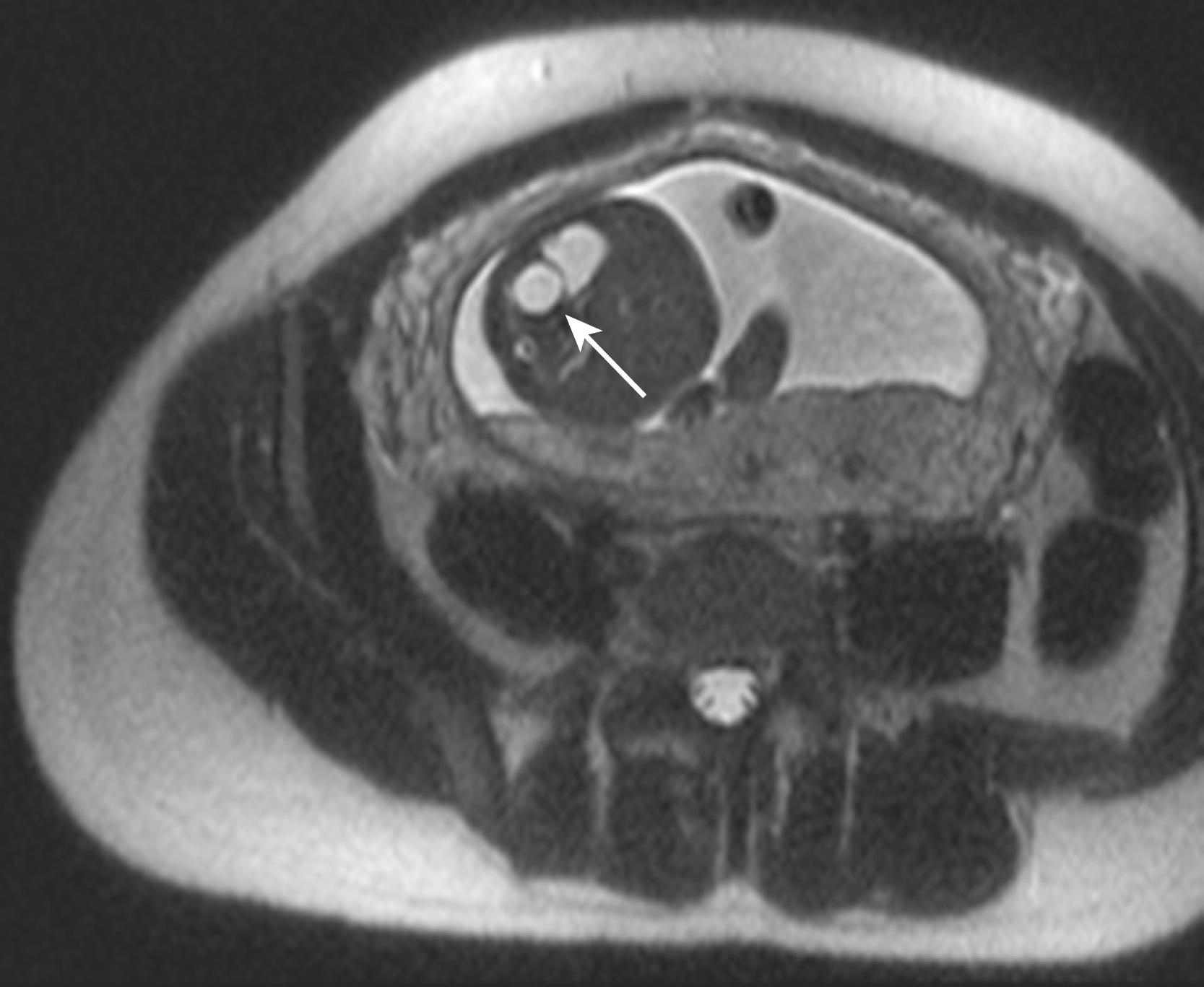
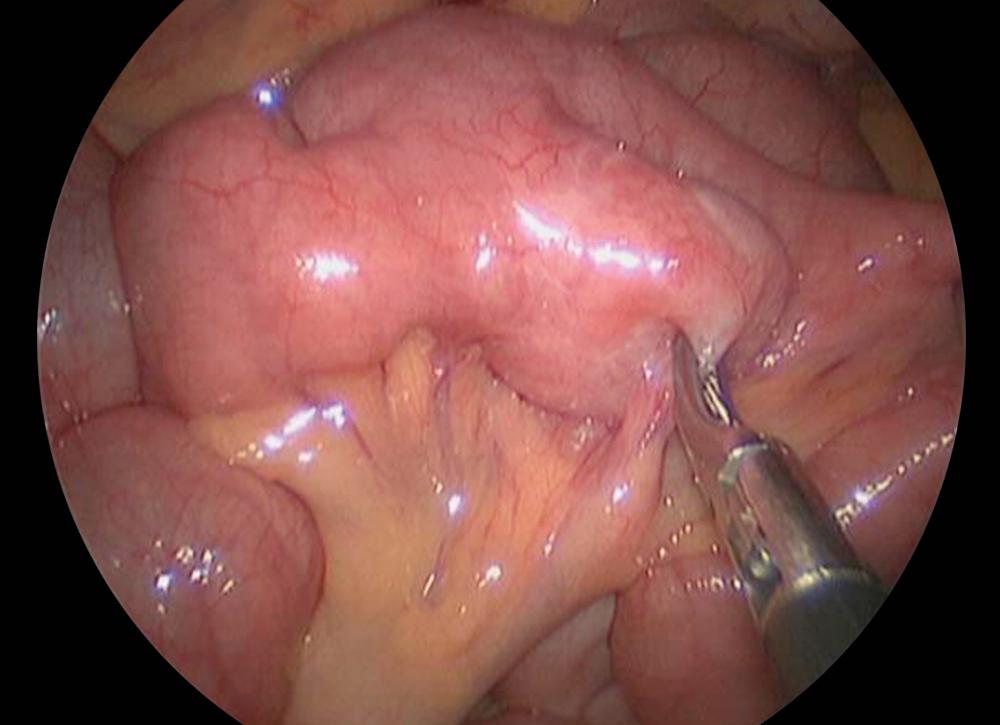
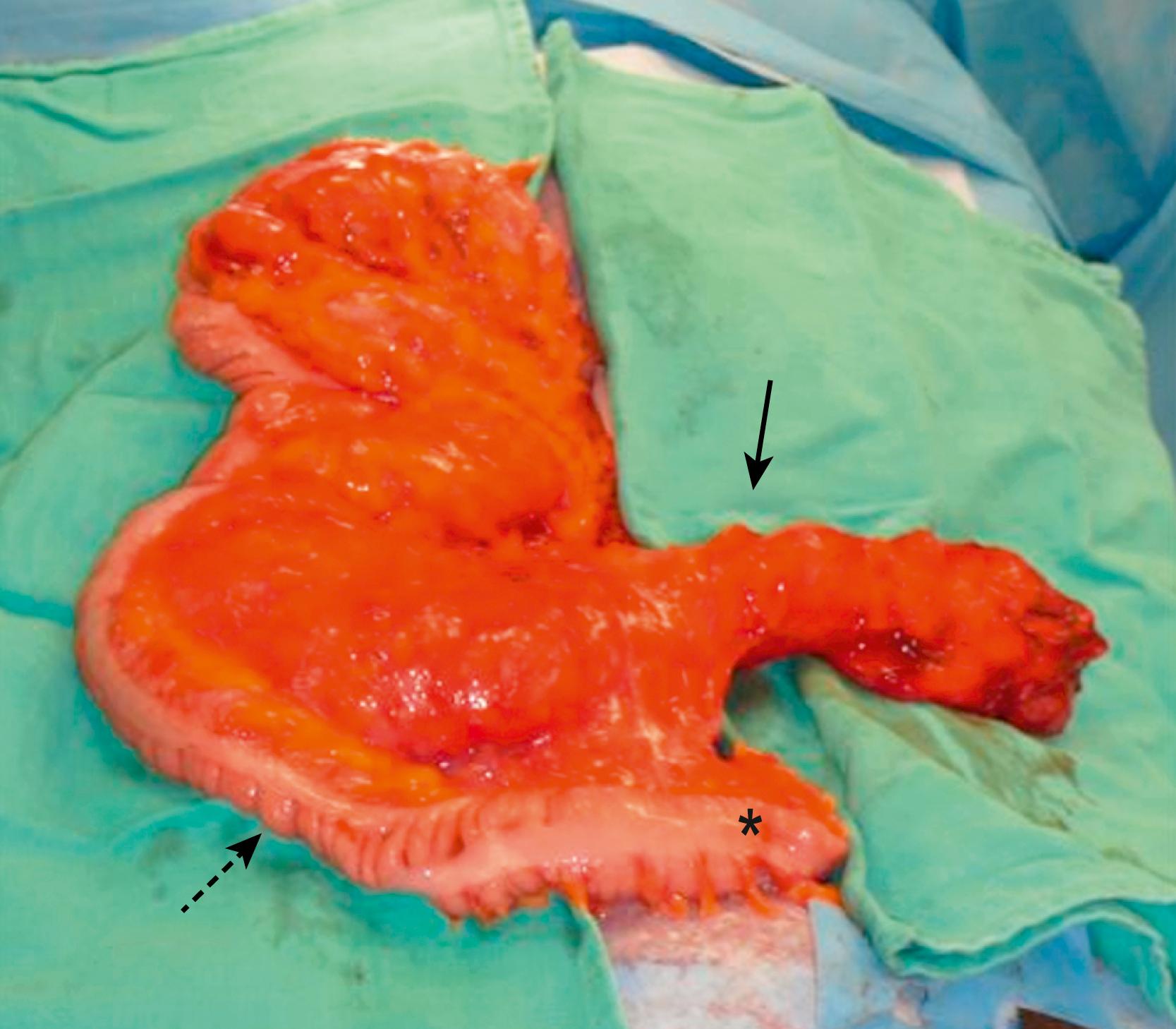
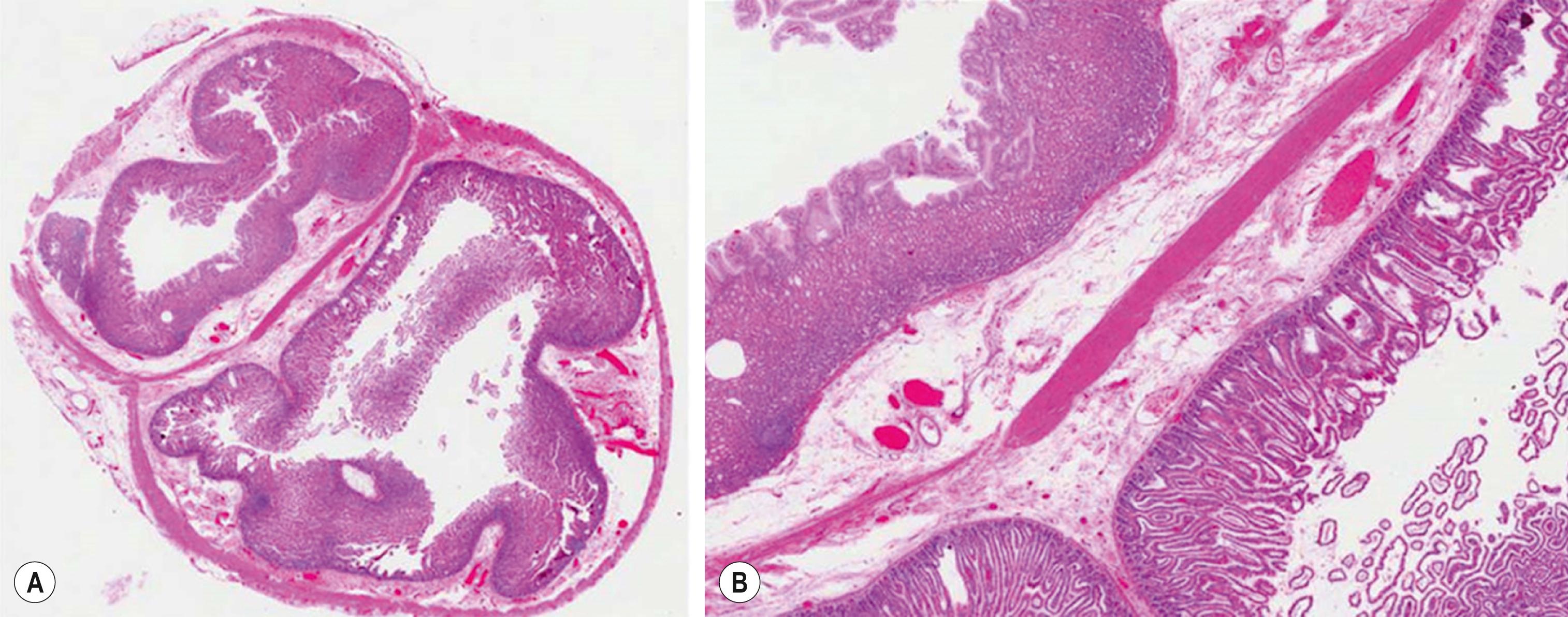
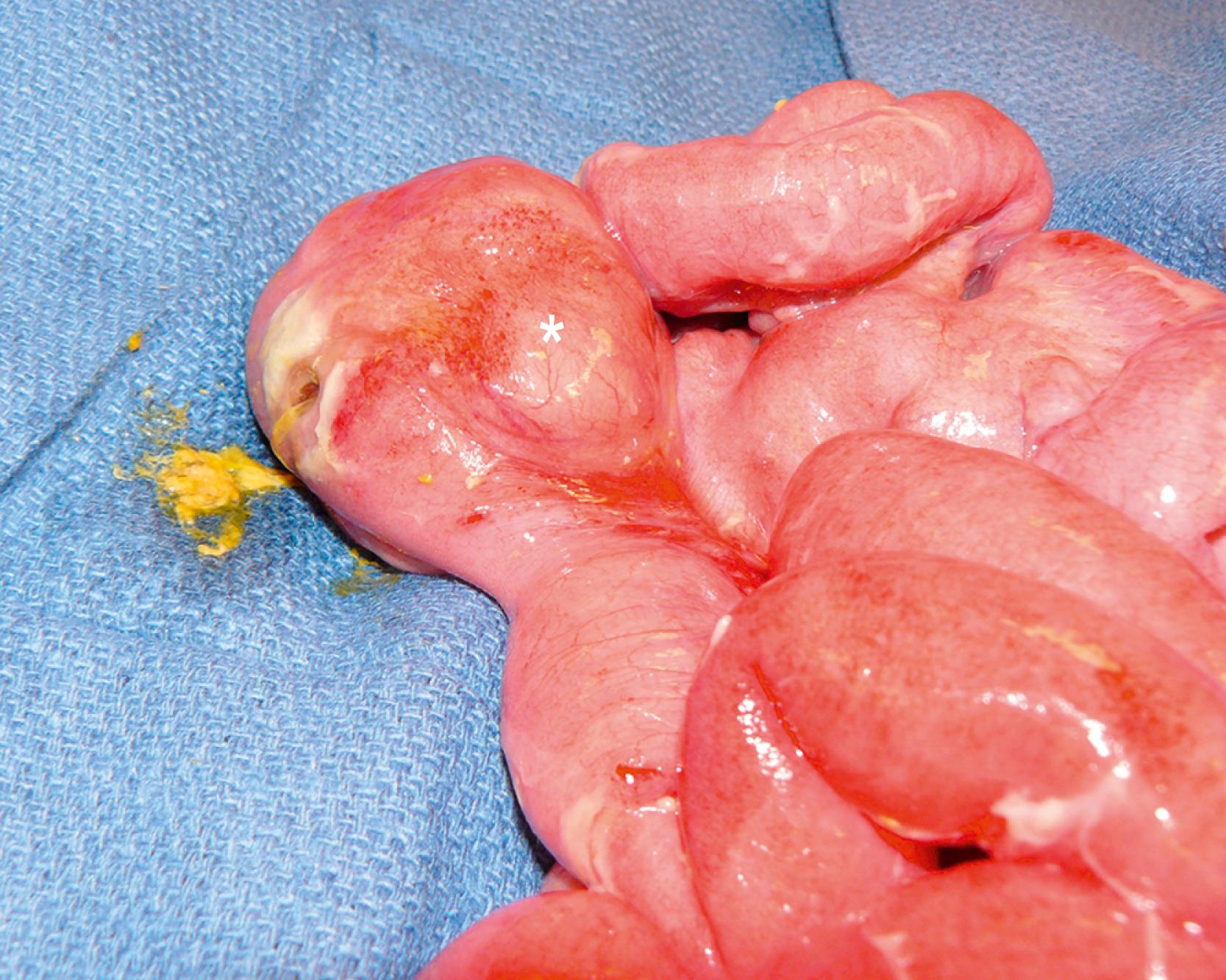
Multiple imaging modalities are utilized to make the diagnosis. Prenatal ultrasound (US) can be followed with US postnatally, which may be sufficient, especially for distal small bowel lesions. The typical sonographic appearance of a duplication (the double wall sign) demonstrates a cystic rim of hyperechoic serosa and an inner hyperechoic rim of mucosa and submucosa with a hypoechoic muscular layer sandwiched between the two hyperechoic layers ( Fig. 39.6 ). For foregut lesions, more information in the form of computed tomography (CT) or magnetic resonance imaging (MRI) may prove valuable in operative planning. Plain radiographs may reveal a mediastinal mass, which requires further workup with either CT or MRI. Contrast studies may show a mass effect or communication with the alimentary tract and can help with the diagnosis, particularly in hindgut and foregut lesions. Technetium-99m scintigraphy may be used as adjuvant imaging but is likely unnecessary in most cases. The presence of a vertebral abnormality and a duplication is best investigated with MRI to evaluate communication with the spinal canal.
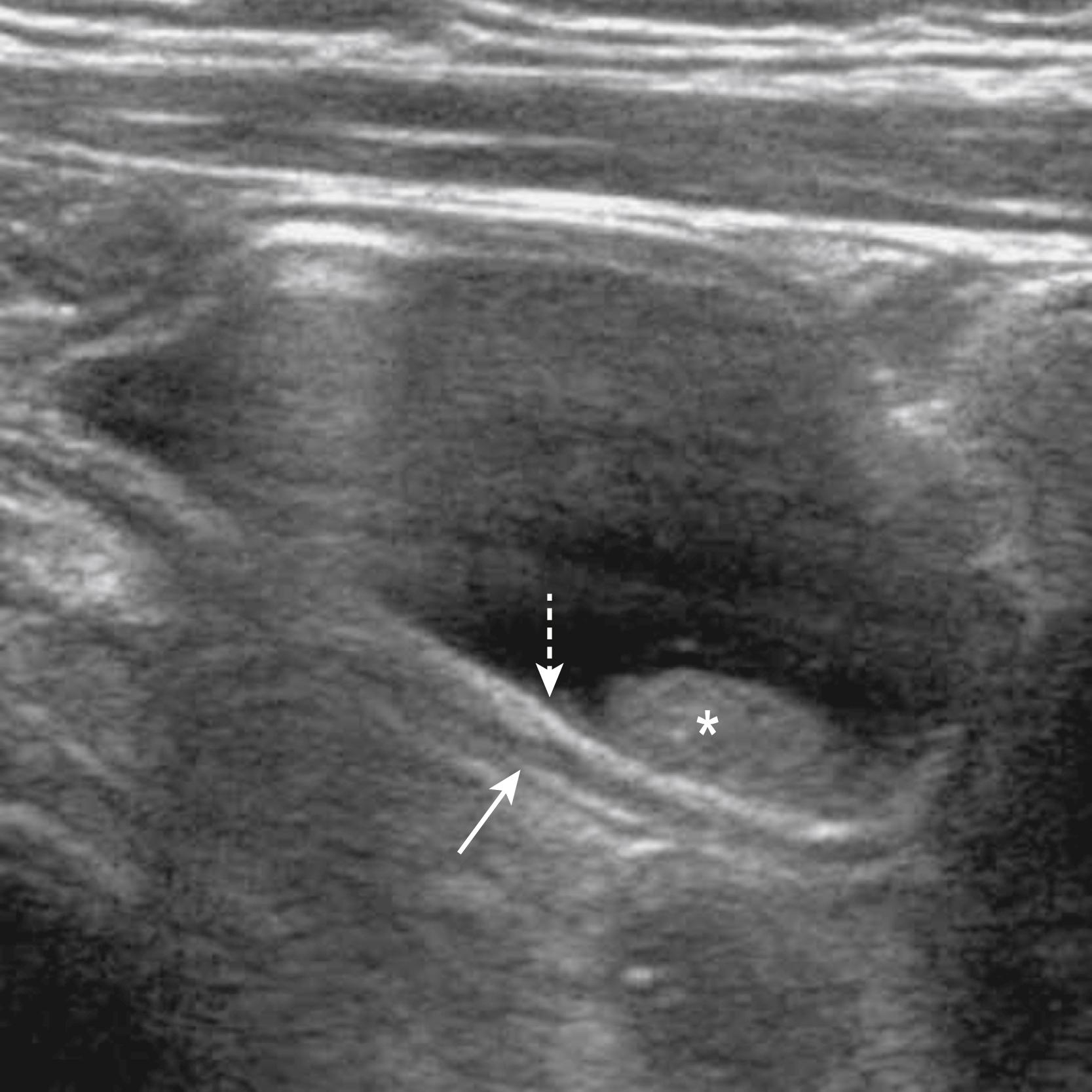
To better understand the wide presentation and surgical treatment of duplications, they are best discussed according to anatomic location. A compilation of major case series reported in the last 75 years from 23 different institutions is seen in Table 39.1 . The goal of operative management is to remove the duplication, but the surgical procedure should not be more radical than necessary to eliminate the patient’s complaints and prevent recurrence. Simple cyst resection without violating the native GI tract is one option, but because most share a common blood supply to the native alimentary tract, resection with primary anastomosis is often needed and curative, depending on the location.
| First Author | Institution | No. D (No. Pts) | Esophagus | Thoracoabdominal | Stomach | Duodenum | Jejunum/ileum | Colon | Rectum | Other |
|---|---|---|---|---|---|---|---|---|---|---|
| Mejaddam, 2017 | Children’s Hospital of Philadelphia | 107 (104) | 27 | 0 | 16 | 9 | 37 | 7 | 1 | 7 |
| Erginel, 2017 | Istanbul University, Turkey | 40 (40) | 2 | 0 | 2 | 3 | 24 | 9 | 0 | 0 |
| Rattan, 2017 | Pt. B.D. Sharma PGIMS Rohtak, India | 17 (17) | 0 | 0 | 1 | 2 | 12 | 2 | 0 | 0 |
| Jehangir, 2015 | Christian Medical College, India | 38 (35) | 6 | 3 | 3 | 1 | 17 | 6 | 1 | 1 |
| Okur, 2014 | Dicle University, Turkey | 32 (32) | 1 | 2 | 2 | 5 | 16 | 5 | 1 | 0 |
| Zouari, 2014 | Habib Thameur Hospital, Tunisia | 12 (12) | 1 | 0 | 1 | 4 | 5 | 1 | 0 | 0 |
| Lima, 2012 | University of Bologna, Italy | 22 (22) | 5 | 0 | 3 | 2 | 9 | 3 | 0 | 0 |
| Guerin, 2012 | GECI, France | 114 (114) | 16 | 0 | 14 | 7 | 70 | 6 | 1 | 0 |
| Puligandla, 2003 | Montreal Children’s | 73 (73) | 0 | 0 | 6 | 7 | 51 | 5 | 4 | 0 |
| Karnak, 2000 | Ankara, Turkey | 42 (38) | 7 | 2 | 1 | 3 | 17 | 9 | 2 | 1 |
| Yang, 1996 | NTUH, Taipei, China | 20 (17) | 2 | 0 | 1 | 0 | 14 | 3 | 0 | 0 |
| Iyer, 1995 | Children’s Hospital Los Angeles | 29 (27) | 0 | 0 | 3 | 1 | 9 | 8 | 6 | 2 |
| Stringer, 1995 | Hospital for Sick Children, London | 77 (72) | 15 | 6 | 10 | 3 | 21 | 10 | 6 | 6 |
| Bajpai, 1994 | IIMS, New Delhi, India | 15 (14) | 8 | 1 | 0 | 1 | 1 | 3 | 1 | 0 |
| Pinter, 1992 | Hungary | 30 (28) | 6 | 2 | 4 | 3 | 9 | 3 | 3 | 0 |
| Holcomb, 1989 | Children’s Hospital of Philadelphia | 101 (96) | 21 | 3 | 8 | 2 | 47 | 15 | 5 | 0 |
| Bissler, 1988 | Akron Children’s | 11 (11) | 1 | 0 | 1 | 2 | 4 | 2 | 1 | 0 |
| Ildstad, 1988 | Cincinnati Children’s | 20 (17) | 6 | 0 | 1 | 0 | 5 | 8 | 0 | 0 |
| Hocking, 1981 | RHSC, Glasgow | 60 (53) | 8 | 2 | 8 | 1 | 32 | 4 | 5 | 0 |
| Bower, 1978 | Pittsburgh Children’s | 78 (64) | 15 | 1 | 6 | 6 | 34 | 12 | 2 | 2 |
| Favara, 1971 | Denver Children’s | 39 (37) | 6 | 0 | 3 | 4 | 20 | 4 | 0 | 2 |
| Grosfeld, 1970 | Columbus Children’s | 23 (23) | 4 | 2 | 1 | 0 | 9 | 7 | 0 | 0 |
| Basu, 1960 | A. H. Children’s, Liverpool | 33 (28) | 7 | 0 | 1 | 3 | 16 | 4 | 2 | 0 |
| Gross, 1952 | Boston Children’s Hospital | 68 (67) | 13 | 3 | 2 | 4 | 32 | 10 | 3 | 1 |
| TOTALS | 1098 (1041) | 177 | 27 | 98 | 73 | 511 | 146 | 44 | 22 | |
| PERCENTAGE | 16% | 2% | 9% | 7% | 47% | 13% | 4% | 2% |
In the recent CHOP 25-year review, bowel resection was required in 34% of the cases. Long tubular, thoracoabdominal, and gastroduodenal duplications may present a more difficult challenge as resection can carry significant morbidity. Partial excision with mucosal stripping may be the best option in these situations. Overall prognosis is favorable, but associated malformations, location, and presenting illness can factor into the final outcome.
Approximately 16% of duplications arise from the esophagus (see Table 39.1 ). Although cervical and abdominal esophageal duplications occur, the majority are located along the thoracic esophagus and in the right chest. Most are cystic and share a muscular wall with the esophagus but do not communicate with the lumen. Clinical presentation will depend on whether there is a mass effect. Esophageal compression can lead to dysphagia or regurgitation while respiratory symptoms such as cough or pneumonia can result from airway or lung compression. Almost 40% of esophageal duplications contain ectopic gastric mucosa ( Table 39.2 ), so peptic ulceration leading to anemia or hematemesis can be seen, albeit rare. Esophageal duplications also can have respiratory epithelium or primitive lung tissue associated with the lesion ( Fig. 39.7 ). Despite the wide range of potential clinical manifestations, esophageal duplications are most commonly asymptomatic and diagnosed incidentally either prenatally or during workup for an unrelated problem such as a respiratory infection or trauma. Duplications should be included in the differential diagnosis for any patient presenting with a posterior mediastinal mass.
| First Author | Esophageal | Small Bowel | Colorectal |
|---|---|---|---|
| Mejaddam, 2017 | 3/27 | 22/46 | 1/8 |
| Okur, 2014 | 2/3 | 2/13 | 1/6 |
| Guerin, 2012 | 3/16 | 41/70 | 0/7 |
| Puligandla, 2003 | 30/58 | 3/9 | |
| Stringer, 1995 | 9/21 | 7/24 | 0/16 |
| Bajpai, 1994 | 9/9 | 2/2 | 1/4 |
| Holcomb, 1989 | 8/24 | 12/49 | 1/20 |
| Ildstad, 1988 | 2/6 | 5/13 | 0/8 |
| Hocking, 1981 | 5/10 | 21/33 | 2/9 |
| Bower, 1978 | 7/16 | 5/40 | 0/4 |
| Favara, 1971 | 3/6 | 6/24 | 0/4 |
| Gross, 1952 | 7/16 | 8/36 | 0/10 |
| TOTALS | 58/154 (38%) | 161/408 (39%) | 9/105 (9%) |
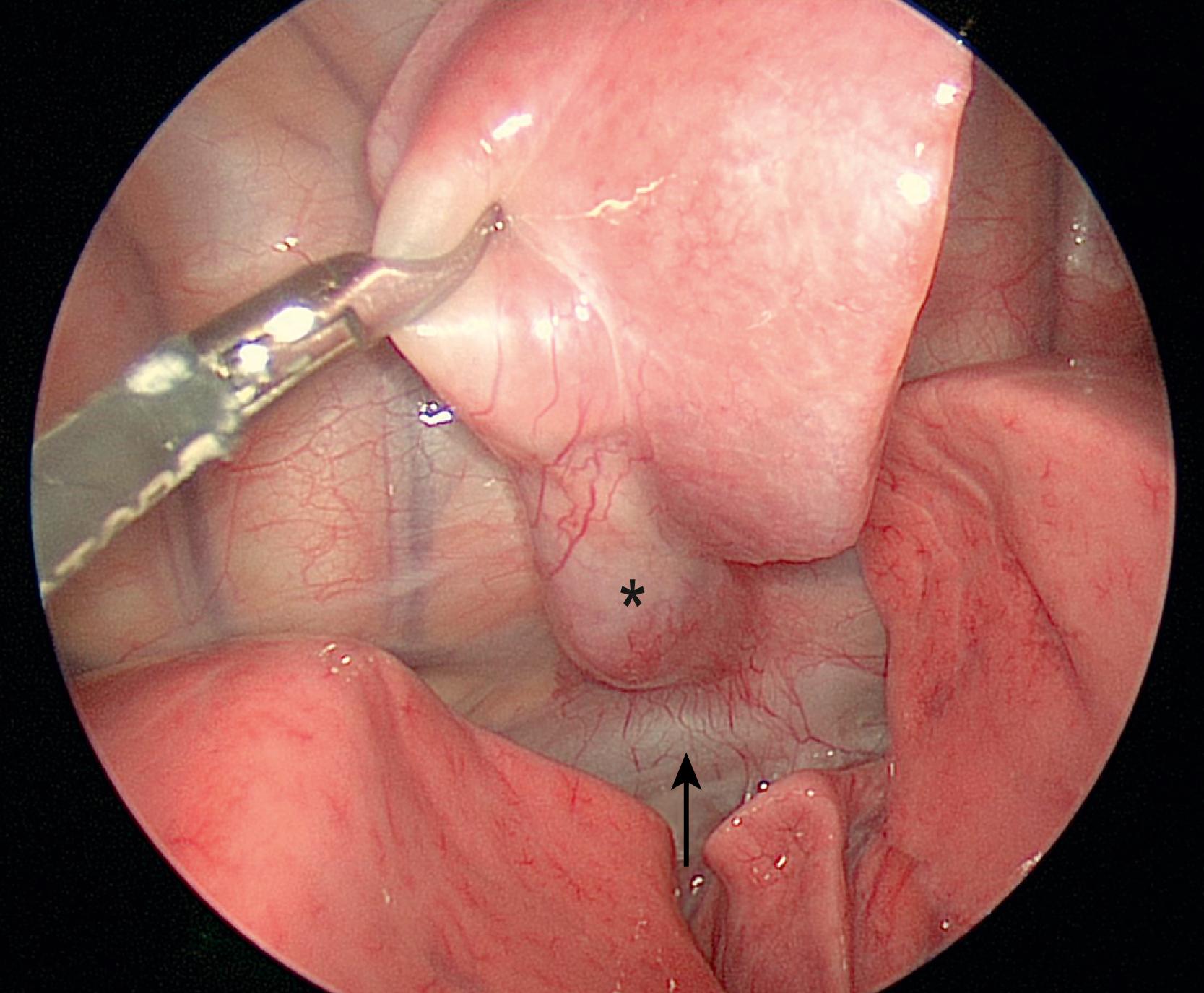
Once a duplication is suspected, axial imaging with either CT or MRI is helpful ( Fig. 39.8 ). When a thoracic duplication is identified, some advocate for US of the abdomen to evaluate for synchronous abdominal duplications as a 25% incidence has been described. US is efficient, inexpensive, and has little risk to the patient. Esophageal duplications should be removed because of the risk of malignancy and the risk that they will become symptomatic at some point. With the increased use of thoracoscopy, many esophageal duplications are being resected with a minimally invasive approach rather than traditional thoracotomy. Typically they can be removed by carefully creating a cleavage plane within the muscular wall that is shared with the native esophagus. As with any chest operation, care must be taken to avoid injury to adjacent structures, including the phrenic and vagus nerves. If there is any concern for esophageal violation, a postoperative esophagram should be done to evaluate for leak.
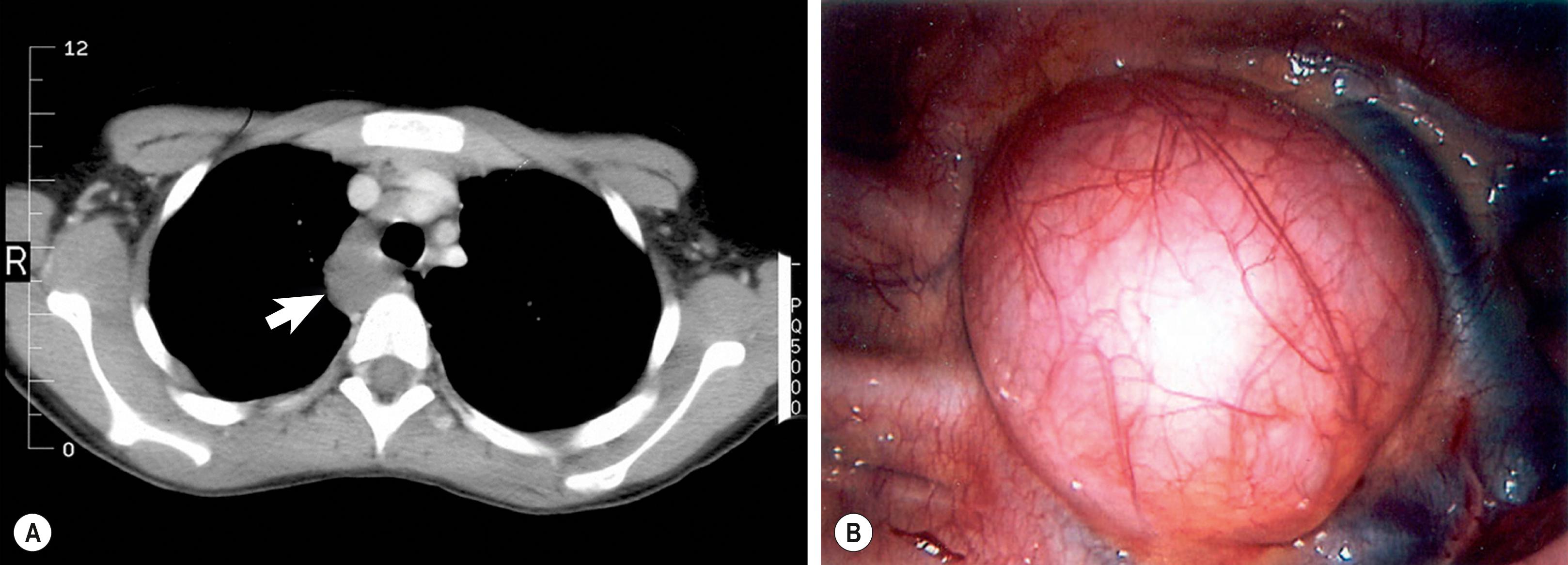
Become a Clinical Tree membership for Full access and enjoy Unlimited articles
If you are a member. Log in here